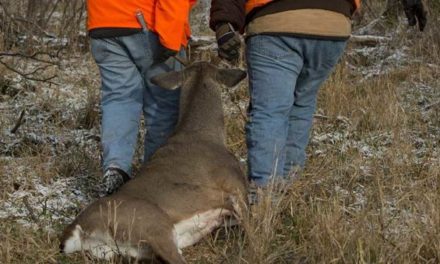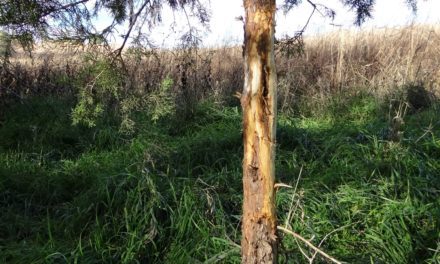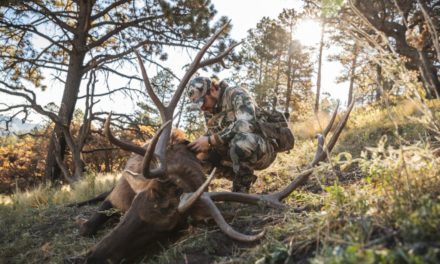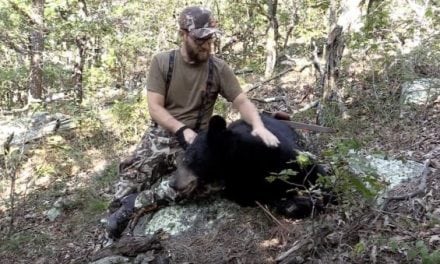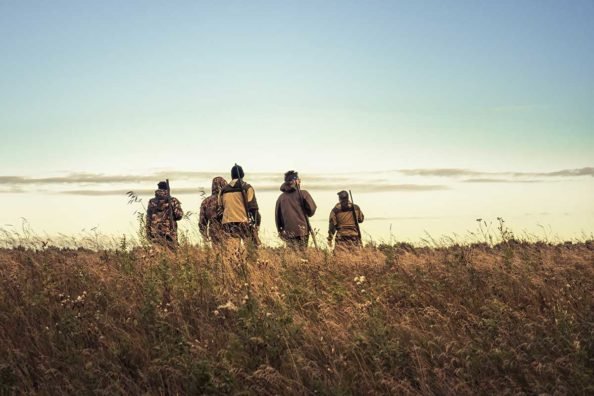
Why proper hunting etiquette is such a big part of who we are as sportsmen, and something that should never be taken lightly.
Most of the time hunting etiquette goes hand in hand with basic safety, but it also involves basic common sense and decency. Some things should go without saying: don’t litter around your treestand, hunt your buddy’s favorite spot, or sneak onto private land that you don’t have permission to hunt.
But there are other, typically-unwritten rules that can intimidate beginner hunters. There are plenty more than just five proper hunting etiquette protocols, but this list will give you a good starting point.
Let’s explore a few common misconceptions about the hunt when it comes to behaving properly and being a good hunting partner. Because no one wants to be on the wrong side of proper hunting etiquette.
Common Sense Contact
We all love that old saying that “Common sense ain’t so common anymore,” but it shouldn’t be all that difficult to hunt amongst others while staying true to common sense practices. This can be especially true for those sportsmen hunting public land.
Even the best taught and well-intentioned hunters are human and we make mistakes so it’s never a bad time to brush up on safety and simple hunting etiquette.
Sometimes the easiest of ways to subscribe to proper etiquette is avoiding folks. Other times, when it’s tough or impossible to get out of their vicinity, you’d be well served by establishing contact and extending a greeting. A wave or hello might be all that’s required, but if you appear friendly and open to contact, you might be able to talk with them briefly and determine where you can both go without interfering with each other.
Some of these shared, public lands prohibit permanent treestands or blinds, and you don’t want to be crawling all over each other. Whether it’s a portable ground blind or climbing tree stand, you can easily determine where others are, and where you should be.
Hunter Etiquette Means Hunter Courtesy
Common courtesy goes a long way when it comes to the hunt, even for folks that are used to hunting in the same group. Being respectful to your fellow hunters can be as a simple as picking up after yourself on the way out.
This is just as important on private lands as as it is on public. You are a guest on that private land, and hunting etiquette takes on new meaning. Whether you’re bowhunting or rifle hunting, you should always respect the rules of the owner.
For instance, we deer hunt a 60-acre plot, and the landowner has always asked that we do not hunt the 20 or so acres nearest his house. We want to keep this landowner happy, so we don’t hunt that area.
Stand Location
The land both north and south of the area where we deer hunt (and shed hunt) has been purchased in recent years, and we’ve discovered that the new owners on both sides seem to think they were somehow cheated out of the best spots.
In both cases, these new landowners have hung their ladder stands as close as 10 yards from the property line. Even worse, they’re facing the property line as if they are hunting our land. The area behind their stands (on their own land) is in such thick cover that they couldn’t even shoot into it if they wanted to.
This, to me, is against typical hunting etiquette.
They’ve never approached us or reached out in any way to try and start a conversation. They just hung their stands and there they are. The fact remains that in most states, including New York where this is occurring, a hunter cannot follow a wounded deer onto private property without permission. The landowner is not in any way compelled to allow it, even for the purpose of removing a dead animal. I’m wondering what I might do if this ever happens to us…
I’ll probably lean towards the courteous approach, and heed the previous tip’s lesson. I’d likely let them retrieve a deer if it made it onto our land, but I’d also initiate a conversation about avoiding this sort of thing with a simple relocation of their stands.
Upland Bird Hunting
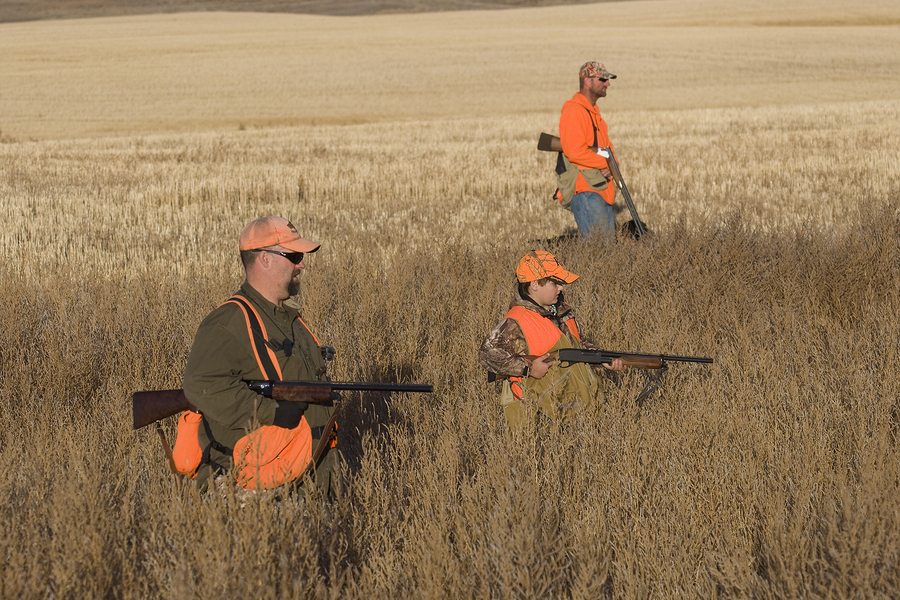
Big game hunting has certain etiquette parameters, but upland bird hunting might be one of the biggest activities in terms of following rules. For the hunter that is chasing pheasant, quail, or grouse, it is customary to honor the fellow hunter as much as your own shots.
It’s easy to get excited and draw up your shotgun when a beautiful rooster pheasant launches right in front of you, but the fact is that it might be the other hunter’s shot. You never want to shoot over the top of another hunter, or a gun dog for that matter, so be patient and cautious while upland hunting.
Duck Hunting Rules of Etiquette
There might be more duck hunting etiquette rules than any other, but the basics should go without saying: don’t take shots that are out of range, (sky bust) don’t shoot across your hunting partner, don’t flock shoot, and don’t shoot birds on the water just to name a few.
I’ve noticed quite often that not every waterfowl hunter subscribes to all of these rules, especially when it comes to flock shooting, but remember this- it might be great to see five or six geese drop in the field you’re hunting when you’ve just successfully decoyed in a flock of 50, but how many of the birds that flew away now have birdshot stuck in their hides?
Move Through at Midday
Deer Hunting never ends right? It's just time to start over and begin the scouting process. #PnumaOutdoors…
Posted by Pnuma Official on Wednesday, January 6, 2021
Deer are creatures of habit and are most active during the dawn and dusk hours (what the experts call “crepuscular”). This is a very respectful thing to remember when scouting on public lands. Sure, deer will avoid a person scouting early and late, and then return to the area later, but if too many hunters are moving through an area in the middle of the day, the deer will leave just based on the activity and never return until after dark.
Glassing as a form of scouting is fine to do midday, but don’t bust through a spot without knowing what’s there, and what might get disturbed.
Turkey Scouting and Calling
One good rule of thumb protocol when scouting for that big gobbler is to leave your turkey calls at home. Nothing can make that big boss Tom call shy more than hearing a hen outside of his harem over and over, but never being able to find her.
We’ve all had birds come in to the call without a gobble for various reasons, but a wild turkey that has heard it all before not only won’t respond, but he’ll likely march his flock in the other direction faster than you can imagine.
Remember that on public or private land, a call-shy bird is a much smarter bird, and they’re tough enough to hunt as it is.
Other Considerations
When it comes to hunting season, there’s a lot to remember. Everyone wants to have a good morning in the hunt field, and hunting regulations only tell part of the story. If you already have a hunting spot, or trying to find one through scouting, we’re all susceptible to etiquette gaffes.
Most of these issues can and will occur on public hunting grounds, but they can all happen anywhere.
We’re all in this together and if we’re going to recruit more in the way of the hunting ranks, then we need to remember one of the best hunting etiquette rules that there is: be an ambassador of the outdoors at all times.
Looking for a new way to display those antler sheds? Go to Rack Hub and use the coupon code Craiger. Be sure to follow my webpage, or on Facebook and YouTube.
Products featured on Wide Open Spaces are independently selected by our writers and editors. However, when you buy something through our links, we may earn a commission.
NEXT: CAN-AM BUILDS A DEFENDER MAX INTO THE TOTAL WATERFOWL UTV
The post 5 Proper Hunting Etiquette Tips appeared first on Wide Open Spaces.












